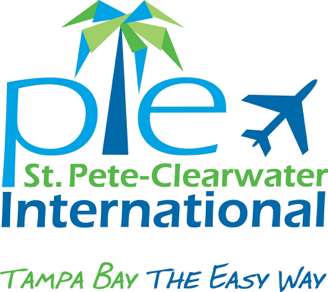St. Pete-Clearwater International Airport (PIE) Holiday Travel Tips
Dec 11, 2023
St. Pete-Clearwater International Airport (PIE) Holiday Travel Tips
Please plan ahead to help make your travel easy as PIE! December Holiday Season is a very busy time of the year, so please be patient and follow these travel tips.
Airport Travel Tips
PLEASE CONSIDER GETTING A RIDE TO PIE. Parking options are very limited at the airport. We expect all parking lots to fill to capacity. For available transportation services, please check fly2pie.com/parking-and-transportation/transportation-services Complimentary shuttle service is provided between the economy lots and the terminal. The Key Lime Economy Lot is the primary Economy Lot and is located across Roosevelt Blvd. Traffic and construction can impact shuttle service. The Strawberry PIE Lot opens after Key Lime Economy is full and accepts only credit and debit cards when exiting. No overnight parking is allowed in Short-term parking. Once all parking lots are closed, no additional parking is available at the airport; limited options are available at some nearby hotels on a first-come first serve basis and are listed on the website. For parking info, rates and maps, check fly2pie.com/parking-and-transportation/parking For information on Disabled Parking, check fly2pie.com/parking-and-transportation/parking/disabled-parking-info
Please allow ample travel time to the airport. Shuttles operating to and from our Economy Parking Lots may experience delays due to traffic congestion or construction activity. The Florida Department of Transportation (FDOT) Gateway Express Project is under construction on the roadways surrounding the airport. Check updates at fdottampabay.com/project
Picking up passengers? Use our free cell phone lot to await your party until they are curbside with their luggage. Active loading and unloading only at curbside in front of terminal and remain with your vehicle at all times. No curbside waiting allowed.
Go Easy! For more information, including our terminal map, parking map, and airline websites, visit our website fly2pie.com
Airline Travel Tips
Plan to arrive 2 hours before your scheduled flight departure time and check departure gate. PIE has two separate gate areas 2-6 and 7-11 that are not connected, so make sure you are at your correct gate 50 minutes before departure ready to board. Please check with airline for carry-on luggage requirements and sizes.
Monitor/Check with your airline for updated flight information.
For wheelchair assistance, request directly from your airline. Wheelchair assistance is provided from check-in to boarding aircraft and from aircraft to baggage claim.
TSA Travel Tips - tsa.gov/travel
Tip 1: TSA PreCheck members: Make sure the TSA PreCheck mark is on your boarding pass. Passengers must ensure that their Known Traveler Number (KTN) along with correct date of birth is in their airline reservation. Teenagers age 17 and under may now accompany TSA PreCheck enrolled parents or guardians through TSA PreCheck screening when traveling on the same reservation and when the TSA PreCheck indicator appears on the teen’s boarding pass. Children 12 and under may still accompany an enrolled parent or guardian when traveling through the TSA PreCheck lanes anytime without restriction.
Those enrolled in TSA PreCheck enjoy the benefits of faster checkpoint screening. The five-year membership costs $78. After submitting an online application, which takes just five minutes, applicants must schedule an appointment at any of the 500+ enrollment centers. After a successful enrollment center visit, most new enrollees will receive their KTN within three to five days. Members may renew membership online up to six months prior to expiration for another five-year term for $70. Most TSA PreCheck members wait less than five minutes at the checkpoint.
Tip 2: Firearms and ammunition are not permitted in carry–on bags, but are permitted in checked bags when properly packed and declared. If passengers choose to travel with a firearm, they are permitted only when properly packed and declared at the airline ticket counter for checked baggage. Airlines may have additional requirements for traveling with firearms and ammunition, so travelers must also contact their airline regarding firearm and ammunition carriage policies prior to arriving at the airport.
Passengers with firearms found in a carry-on bag at a TSA security checkpoint will lose TSA PreCheck eligibility for five years, which includes current TSA PreCheck members. Additionally, TSA may conduct additional screening for those passengers to ensure no other threats are present. Late last year, TSA increased the maximum civil penalty for a firearms violation to $14,950. Passengers with firearms found in a carry-on bag at a TSA checkpoint are also subject to applicable city or state laws at that airport that may include citation or arrest.
Tip 3: Pack an empty bag and know before you go. When airline passengers begin packing for travel with an empty bag, they are less likely to be stopped at the security checkpoint for having prohibited items. Prior to packing that empty bag, check TSA’s “What Can I Bring?” tool to know what is prohibited. The most common prohibited items at the TSA checkpoint are drinks and foods that are prohibited according to the liquids, gels and aerosols rule.
Tip 4: Give yourself plenty of time. Passengers should give themselves plenty of time to return a rental car, check-in with the airline, check bags with the airline and prepare for the security checkpoint. Passengers may save time by removing items from pockets and placing them in their carry-on bag, instead of putting items directly into bins at the conveyor belt.
Tip 5: Be aware of new checkpoint screening technology. TSA uses a variety of security methods and technologies to secure our transportation systems. Screening protocols can be unpredictable and may vary from airport to airport depending on available technology and the current threat environment.
Computed Tomography (CT) Scanners: Some airports have installed new state-of-the-art CT scanners which significantly improves threat detection capabilities for carry-on bags and reduces physical searches of bag contents for prohibited items. CT units give Transportation Security Officers (TSOs) the ability to review a 3D image of passengers’ bags and reduce physical searches of bag contents for prohibited items. Passengers screened in security lanes with CT units do not need to remove their 3-1-1 liquids or laptops, but they must place every carry-on item, including bags, into a bin for screening. Light items should be placed at the bottom of the bin to avoid anything falling out into the tunnel and causing an unnecessary bag jam. TSA advises travelers not to force larger items into the tunnel but to ask a TSO for assistance, as the opening to the X-ray tunnel on a CT unit is slightly smaller than on a traditional X-ray unit. Passengers are also reminded to bring a maximum of one carry-on bag and one personal item through security screening. If a passenger uses more than one bin, their bins may not come out of the tunnel together, so TSA encourages passengers to make sure they are not leaving anything behind at the checkpoint. As with any new technology, it will take some time for passengers to get used to this new screening technology. Some airports have construction underway to install these new CT scanners, and TSA asks passengers to be patient during the screening process.
Advanced Imaging Technology (AIT): Before passengers go through the AIT, all items such as wallets, cell phones and all light outerwear must be removed. Light outerwear is defined as an outer layer of clothing with a full front zipper or buttons used to fasten the outer garment, excluding button up shirts. Examples include, but are not limited to, windbreakers and vests, suit/sport coats, blazers and light jackets. This includes all standard and TSA PreCheck passengers.
Tip 6: Make sure you have an acceptable ID. Adult passengers 18 years and older must show valid identification at the airport checkpoint in order to travel. Below are some technologies TSA may use to validate your identity.
Credential Authentication Technology II (CAT II): The CAT-2 enables passengers to scan their own identity documentation for authentication and biometric identity matching, reducing unnecessary contact between Transportation Security Officers and passengers. Participation in the use of biometric technology is voluntary and may notify a TSO if they do not wish to participate and instead, go through the standard ID verification process. TSA has signage at the entrance to the queue along with adjacent to the CAT-2 units to inform travelers that participation is optional.
Credential Authentication Technology (CAT): To strengthen identity verification, TSA is deploying CAT units to confirm the authenticity of a passenger’s identification credential, flight details and screening status – without having to scan a boarding pass. With CAT, passengers only need to provide their acceptable photo identification to the TSO.
Tip 7: Follow TSO guidance. Some people may not have traveled recently, so it is important to listen to the direction provided by our TSOs at the security checkpoint. There may be information on new technologies that helps reduce touchpoints or a TSO may redirect passengers to ensure we keep people moving through the screening process. If flying internationally, upon return to the United States, passengers will encounter a Customs and Border Protection officer to clear customs. Listen for their directions as well. Passengers may also need to have their baggage re-screened by a TSO to continue on to their final domestic destination. Airport and airline employees may also give guidance to help throughout the travel process. Keep in mind that we all work together to ensure a streamlined and convenient passenger experience, so please follow their directions.
Tip 8: Respect TSA and other frontline airport and airline employees. Violence and unruly behavior in the nation’s transportation systems are not acceptable and cause delays at traveler checkpoints. TSOs, along with all frontline airport and airline employees and local law enforcement are all working together to ensure safe and secure travel. Assaulting a TSO is a federal offense and will result in penalties and/or arrest. Always follow the directions of flight attendants aboard aircraft. They are there for your safety and security.
Tip 9: Contact TSA with questions, compliments, complaints or assistance. Travelers with questions have many options for contacting TSA. AskTSA is available for live assistance from 8 a.m. until 6 p.m. ET via Twitter or Facebook by messaging @AskTSA or by sending a text to “272872” (“AskTSA”). For customer service issues, travelers may reach the TSA Contact Center (TCC) at (866) 289-9673. Individuals with disabilities, medical needs or other special circumstances may request passenger assistance at least 72 hours in advance by contacting our TSA Cares passenger support line at (855) 787-2227. Live assistance for both the TCC and TSA Cares is available weekdays, 8 a.m. to 11 p.m. ET, or weekends and holidays from 9 a.m. to 8 p.m. ET.
Tip 10: Traveling with Kids? We know traveling can be stressful. TSA offers a series of videos made specifically for kids to help them understand what they can and cannot bring through the checkpoint. Passengers should double-check the bag their child packed before arriving at the security checkpoint. Formula, breast milk, juice, baby food and even liquid medications in quantities greater than 3.4 ounces are exempt from the 3-1-1 liquids rule. That’s right, when it comes to baby bottles and sippy cups, you are in the clear. Passengers must remove these items from their carry-on bag to be screened separately from the rest of their belongings. TSA does not require children under 18 to provide identification when traveling within the United States, but contact the airline regarding specific ID requirements as guidelines may differ.
Checkpoint-ready passengers are instrumental in helping with efficiency at the checkpoint. When passengers arrive with their identification credentials in hand and avoid the delays associated with bringing firearms, oversized liquids and other prohibited items into the checkpoint, it facilitates faster screening for everyone.
TSA encourages all passengers to remain vigilant. If You See Something. Say Something®. Those traveling abroad should check the U.S. Customs and Border Protection Know Before You Go page to learn about required documentation for your destination.
Happy Holidays!
Thank you!
St. Pete-Clearwater International Airport (PIE)

